 On October 15, the candidates filed their financial reports through September 30 with the Federal Election Commission (FEC). The numbers in those reports have some impressive stories to tell. We’ll tell a few of them here. The stories for House candidates will be presented through summary figures. Because there are fewer Senate candidates, theirs will be more individual. In the end, however, we plan to close everything we say about both chambers with a large set of caveats. The financial numbers do mean something, but there will be a lot more to this election than money.
On October 15, the candidates filed their financial reports through September 30 with the Federal Election Commission (FEC). The numbers in those reports have some impressive stories to tell. We’ll tell a few of them here. The stories for House candidates will be presented through summary figures. Because there are fewer Senate candidates, theirs will be more individual. In the end, however, we plan to close everything we say about both chambers with a large set of caveats. The financial numbers do mean something, but there will be a lot more to this election than money.
House of Representatives
Number of candidates: Most of the overall finance numbers for the House of Representatives through September 30 have been favoring the Democrats. We noted in past posts that a remarkable number of potential Democratic candidates decided to take the plunge and run for office in 2018. By the end of the primary season, this meant that fewer Republican incumbents than ever before could get away with running unopposed. Figure 1 shows the number of uncontested incumbents in each party since 2004.
In 2018, only ten Republican incumbents had a free ride for the general election. The average number of uncontested seats in one or the other party since 2004 has been 54. The next lowest numbers were more than twice this year’s figure. In the Democratic wave election of 2006, Democrats contested all but 22 of the GOP-held House seats. In the Republican wave election of 2010, the GOP contested all but 24 of the Democratic incumbents. In each year, the enthusiasm that persuaded potential candidates to run predicted a big victory for the challenging party.
Democratic Challengers and Candidates in Competitive Elections: Filing to run is only the first step of a long process. To run a strong campaign, you have to raise enough money to get your message across to voters. In 2018, the raw enthusiasm of Democratic candidates for running has been backed by the enthusiasm of their donors. Figure 2 displays fundraising through September 30 for House Democratic and Republican challengers in general elections since 2004.
As the above figure shows, Democrats running in the general election against incumbent Republican House members in 2018 have shattered all previous records for challenger fundraising, more than doubling the previous high set by Republicans in 2010. We know from the work of Gary Jacobson and other political scientists that challenger fundraising is probably the single strongest signpost of a competitive election campaign. In 2010, Republican challengers had raised 43 percent as much as the Democratic incumbents they were facing by the end of September, and 52 Democrat incumbents were defeated in the general election. In 2018, the shoe was more than just barely on the other foot. By the end of September, Democratic challengers had raised 69 percent as much as the incumbents they faced. We should emphasize that this includes all challengers and not only the ones in competitive races. All Democratic challengers, including the sure losers, raised almost as much by September 30, on average, as the average winner spent over the course of the entire two-year cycle in 2016. (See the Brookings Institution’s Vital Statistics on Congress and The Campaign Finance Institute’s Guide to Money in Federal Elections.)
In contests for the 42 open seats currently held by Republicans, Democrats have outraised the Republicans by an average of $2.2 million to $1.4 million. This is the only year since we began calculating in 2004 in which out-party candidates had a major financial advantage in open seat races. The only other time an out-party had even a slight advantage was in the GOP landslide year of 2010, when Republicans running for Democratic-held open seats outraised the Democrats by $1.2 million to $1.1 million.
Competitive districts: The remarkable performance by Democratic challengers flows not only from the passion of their potential donors. It also comes from the sheer number of seats that are genuinely “in play” this year. The nonpartisan Cook Political Report and Inside Politics rated 65 Republican seats and only 6 Democratic seats as either being “tossups” or only “leaning” toward one or the other party. The 65 Republican seats include 48 being defended by incumbents and 17 open seats. The Democratic candidates held the advantage in fundraising in these 65 seats—$3.7 million to $3.2 million in incumbent-challenger races and a remarkable $4.2 million to $1.5 million in Republican-held open seats. In cash on hand, Republican incumbents held a slight advantage over their Democratic challengers, partly because many of the challengers had to spend in contested primaries. In the open seats, the Democrats held a noticeable cash advantage.
Senate
With so few races in any given year, talking about average (or total) receipts does not convey much about Senate elections. For example, we could point out that Senate Democratic challengers in competitive races have raised an average of $25.1 million, compared to “only” $15.0 million for the competitive Republican incumbents. This could even be put forward as if it suggests that the Democrats are well-positioned to pull off some upsets. But then it turns out that there are only three Democratic challengers in competitive races against Republican incumbents. And as they might say in a stats class, the variation across the three Democrats is huge.
One of the competitive races with Republican incumbents is in Texas. The challenger, Beto O‘Rourke, raised more than any other Senate candidate in history through September 30 ($61.8 million) but is nevertheless trailing the incumbent Ted Cruz in most polls. Another of the competitive Democratic challengers is Jacky Rosen of Nevada. Her $16.5 million in only about one-fourth of O’Rourke’s, but that does put her ahead of the incumbent Dean Heller’s $10.5 million. Rosen and Heller are very close in the polls and went into October with almost an equal amount of cash on hand. In fact, most neutral observers would give her better odds than O’Rourke. The third competitive race with a Republican incumbent is a special election in Mississippi, but it is not yet obvious that the Democrat will even be the more competitive of two challengers. Cindy Hyde-Smith was appointed as Senator when Thad Cochran resigned in April for health reasons. This is a nonpartisan contest in which two candidates advance to a runoff if none receives 50 percent. Hyde-Smith raised $2.7 million through September, compared to $1.7 million for the Democratic challenger, Mike Espy. (Espy’s $1.7 million is roughly one-tenth of Rosen’s receipts and one-fortieth of O’Rourke’s). The third candidate is Chris McDaniel, a Republican whose $3.7 million brought him in higher than either Hyde-Smith or Espy. (McDaniel is the Tea Party Republican who narrowly lost a runoff against Cochran in 2014.) Clearly, therefore, the $25.1 million in “average” receipts for these three Democratic challengers tells us nothing useful about Rosen’s, O’Rourke’s, or Espy’s election prospects. (See Table 1.)
Two other competitive races for Republican-held seats do not involve incumbents. They are the open-seat races in Arizona and Tennessee. The general election candidates on both sides in these elections have raised enough to remain competitive with each other through Election Day.
Eight competitive Senate races involve Democratic incumbents. Two (in Florida and New Jersey) feature self-financed Republican challengers who have put more of their own money into their campaigns than the total contributions that went to the incumbents. Of the remaining six races, the Democratic incumbents have raised substantially more than their GOP challengers in five (Missouri, Montana, North Dakota, West Virginia and the special election in Minnesota). But more money hardly means automatic victories. Recent polls show the Democrat ahead in West Virginia and Minnesota, ahead but close in Montana, about tied in Missouri and behind in North Dakota. In the sixth race (Indiana), the Republican has raised more than Democratic incumbent Joe Donnelly. Donnelly is leading by a small margin in a recent poll, but showing vulnerability with less than 50 percent support and a third-party Libertarian candidate at 7 percent.
Caveats: Money may be something, but it sure is not everything
One obvious conclusion from this recitation is not to treat the financial scorecards as if they predict anything more than potential competitiveness. If candidates are to have a serious chance to win, they need enough money to make their voices heard. Having more money will always help, but having more than the opponent does not guarantee victory. In almost every election over the past forty years, the Campaign Finance Institute (CFI) shows successful challengers in House and Senate elections spending less on average than the incumbents they beat.
This general caveat about candidates’ money became even more important after independent spending was unleashed by the Citizens United decision of 2010. CFI’s Independent Spending Tracker shows the most important independent spenders in 2018 (by far) to be the formal political party committees and party leadership-connected Super PACs. Table 2 focuses on the receipts and cash on hand for the party-related committees whose receipts can be known. The formal party committees raised all of their contributions under contribution limits established by the Federal Election Campaign Act, as amended. These include the Democratic Congressional Campaign Committee (DCCC), National Republican Congressional Committee (NRCC), Democratic Senatorial Campaign Committee (DSCC) and National Republican Senatorial Committee (NRSC). The leadership-related Super PACs are ostensibly independent of the formal party but typically run by people who used to work for the party leaders. In addition, the party leaders typically help the committees raise money directly or indirectly. Their contributions are fully disclosed but unlimited, under the constitutional rules set by the Supreme Court’s 2010 decisions in Citizens United v FEC and SpeechNow.org v. FEC.
Table 2 therefore includes the receipts of the two sets of party-related entities that file disclosure reports with the FEC. However, we ought to acknowledge the existence of “dark money” 501 (c)(4) organizations related to these Super PACs. (The Brennan Center has recently published a report on what it calls the “shadow parties” that references three such “dark money” organizations apparently affiliated with the leadership Super PACs.) These are entities that claim to be “advocacy organizations” under the tax law. By filing as 501(c)(4)s, they are claiming that they do not spend their money primarily on elections and that they therefore do not have to disclose their donors (or even their total receipts) to the FEC. We will not even know their total receipts until they file tax returns next year with the Internal Revenue Service. However, these entities must report their independent expenditures. Based on these reports, we know that the bulk of the independent spending in 2018 so far has come from the formal party committees and the leadership Super PACs. The relative importance of dark money organizations theoretically could increase over the next two weeks, but we have not yet seen a good reason to expect that to happen during this election year. (2020 may be different.)
Based on what we can know, therefore, the Democratic and Republican entities appear to have raised roughly the same amounts with roughly the same level of cash left in the bank for closing arguments (see Table 2). And while the money is not insignificant, it is not enough to be decisive. If the parties divided their money equally among the competitive races, they would have only about $500,000 per House candidate and a somewhat more impressive but still not overwhelming $4.7 million per Senate candidate. In both chambers, therefore, we should expect the parties to abandon some races to double and triple up on others.
Because of this parity, we should not be surprised to see what political scientists call the “fundamentals” taking over. And because of the fundamentals, the overwhelming majority of competitive House seats are ones being defended by Republicans, while the Senate balance tilts slightly the other way. This is in fact how most pundits are now setting the odds for Election Day.
However, there remains one wild card in the race. Midterm elections are often said to be referendums on the president. Often, the party out of power will try to nationalize the election by attacking the president. The party holding the White House will try to defend its position by turning the election into a series of local decisions about the individual members. But we know (once again from Gary Jacobson) that the personal value of incumbency has declined markedly these past twenty years while the partisan consistency of congressional voters has been going up. The president has seized on these facts to turn past campaign practice on its head. Instead of localizing races for the in-party, he has been using national media attention to stoke the passions of his loyal base voters. The tactic seems reminiscent of one he used successfully in the Republican presidential primaries. Money is generally valuable for helping candidates or parties communicate or organize. But because Trump was uniquely able during the presidential primaries to reach the voters without paying for it, the value of his free media attention negated the financial advantage held by his opponents. In the same way during the 2018 midterms, the president has reduced the importance of local money differences by focusing the national media’s attention where he wants it. Instead of ducking the idea of a national referendum, he is confronting it. He is trying to counter the long-felt anger and intensity of his opponents by stoking the anger and intensity of his most loyal supporters. We cannot tell how well this is working by combing through FEC reports, but we’ll know soon enough whether it did.
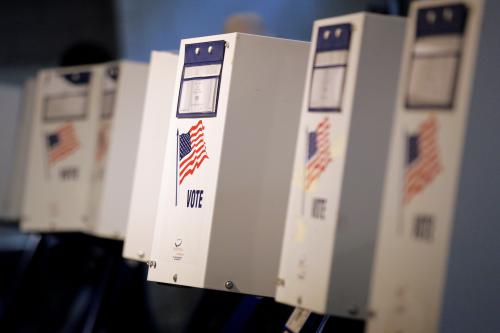
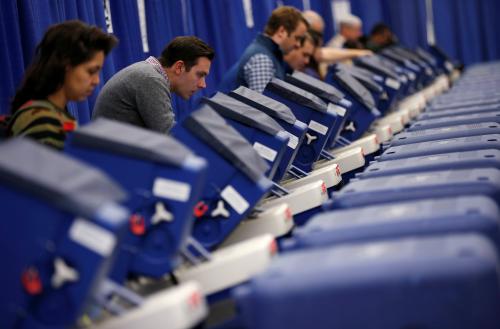
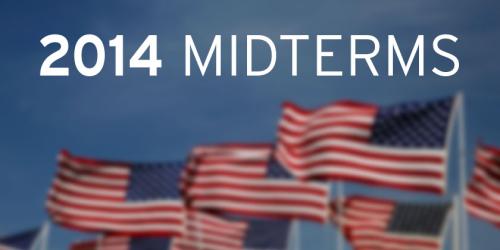
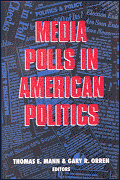
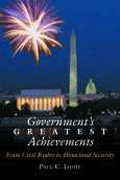
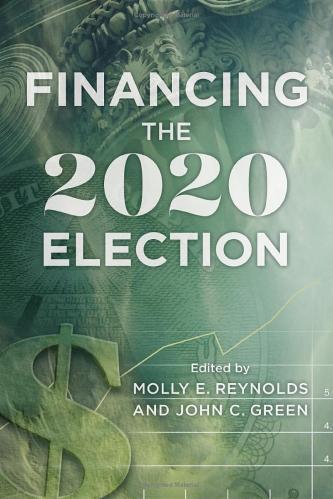



Commentary
What the latest campaign finance filings can—and cannot—tell us about the coming election
October 24, 2018